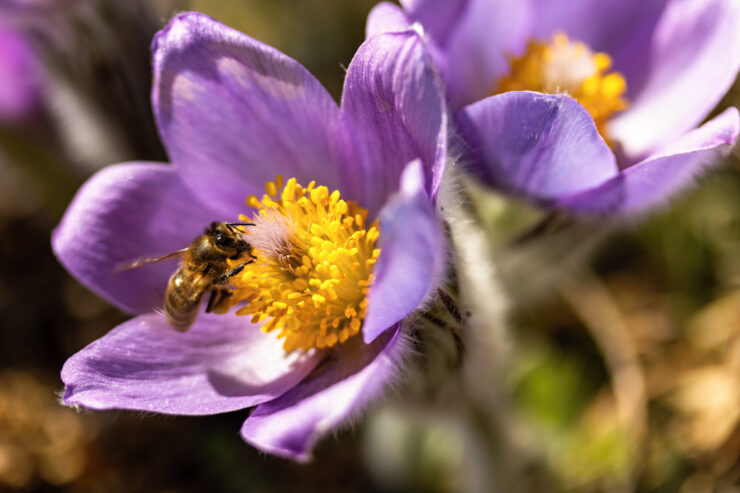You WANT these good bugs in your yard!
Not all bugs are bad, especially when it comes to your yard and your garden. In fact, we’re rolling out the welcome mat for the good bugs that help your outside thrive.
Master Beekeeper McKay Opeifa shared ways to attract the beneficial bugs.
The Importance of a Balanced Ecosystem
McKay emphasized the importance of having a balanced ecosystem in your garden. “All the insects are going to interact. You’re goning have this amazing little ecosystem that lives within your garden, and if you can balance that, you are going to have healthy, thriving plants,” she explained. By attracting beneficial bugs, your garden will flourish with bigger, juicier fruits and healthier plants.
Getting Rid of Unwanted Bugs
Before diving into the beneficial bugs, McKay shared a clever trick for dealing with unwanted insects like yellow jackets and wasps. She suggested using a decoy wasp nest. “So what happens is the wasps are extremely territorial. So if they see this, they’re going make a nest elsewhere. It’s extremely effective,” she explained. This simple $8 fix can help keep aggressive wasps away from your garden.
McKay mentioned that you have to get the decoy nest up before any wasps build a nest in your yard. “If you already have a wasp nest there, they’re not gonna relocate,” she said.
Attracting Native Bees with a Bee Hotel
One of the best ways to invite beneficial bugs into your garden is by setting up a bee hotel. “The native bees that are in your area… live in little tiny holes. The best way to invite them to your space is with a bee hotel,” McKay said.
“ They’re little holes that these bees will come and they will make little cocoons inside. They will stay in your garden… and it’s an easy way to invite them,” she explained. These gentle bees will pollinate your garden well, and the bee hotel is a fun and educational opportunity for kids to observe them. It requires no maintenance, it’s a set-it-and-forget-it yard piece.
Planting Native and Diverse Plants
To attract a variety of beneficial bugs, McKay recommended planting native and diverse plants. “If you have a million lavender plants, you’re gonna attract one type of insect,” she said. “If you diversify and you’re planting all the different things in one area, you’re going to attract the pollinators and the predators and everything is going to kind of coexist.” This turns your garden into its own thriving ecosystem.
Avoiding Harmful Sprays
When it comes to pest control, McKay advised against using harmful sprays. When you spray the bugs you want to get rid of, you also harm the good ones. “Even when they say you’re not, it all is intertwined. It’s seeping into the groundwater. It’s impacting everything,” she emphasized.
She specifically warned against neonicotinoids, which can kill both bad and good insects. “If you can, don’t spray. If you really have to spray, what you want to do is avoid the neonicotinoids. It’s a very, very potent pesticide,” she explained. “With killing the bad insects, they kill the good insects.” Checking for these chemicals in your sprays can help protect your garden’s beneficial bugs.
Chemicals to Avoid in Pesticides
- Acetamiprid
- Clothianidin
- Dinotefuran
- Imidacloprid
- Nitenpyram
- Thiacloprid
- Thiamethoxam
“ Turn around your spray, check for these different names in your spray, and avoid them at all costs. You’ll have a better garden,” Mckay advised.
Educating Yourself About Insects
McKay encouraged you to educate yourself about insects. She recommended using field guides to identify beneficial bugs and understand their role in the garden. “A ladybug larvae… it’s very scary. It almost looks like an alligator. But if you know that that’s your ladybug larvae, you’re not worried, then you leave it alone,” she said.
Find more insight from McKay on Instagram, @mckayjo.















Add comment